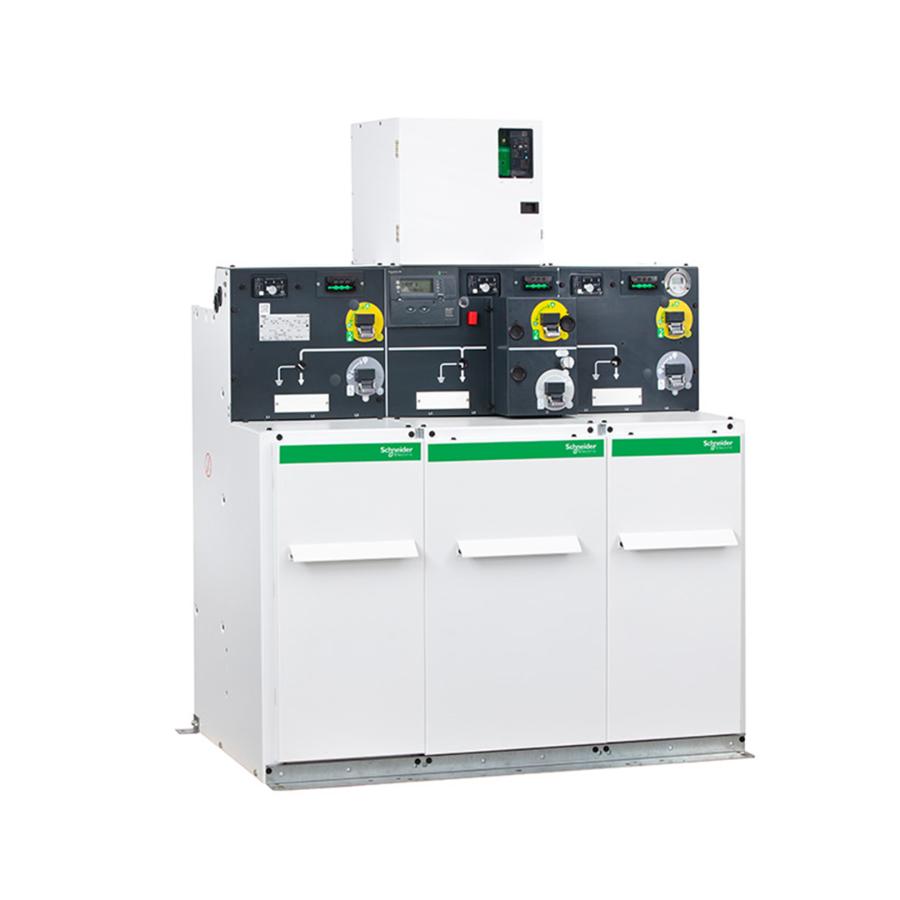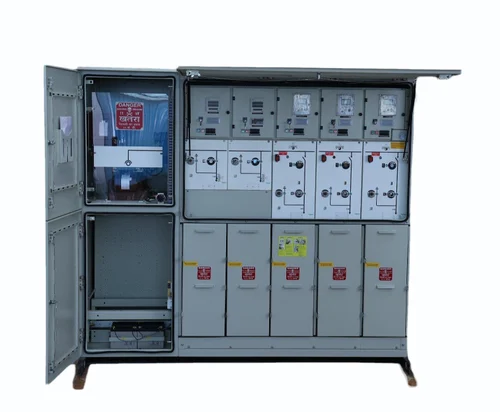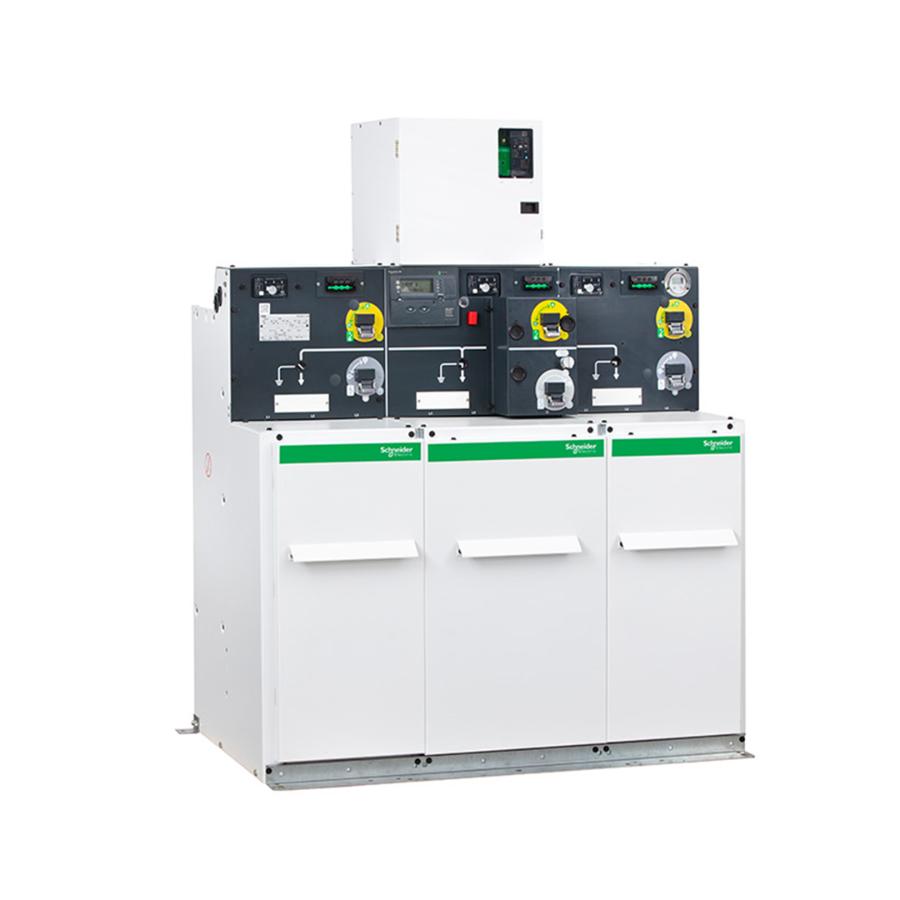
Introduction to Ring Main Units (RMUs)
Ring Main Units (RMUs) are critical components in electrical distribution systems, widely used for medium voltage power distribution. They play a pivotal role in ensuring the reliability, safety, and efficiency of electrical networks, particularly in urban and industrial settings. An RMU is essentially a type of electrical switchgear that includes various functional units within a single enclosure, allowing for the control and protection of electrical circuits.
The Evolution of RMUs
The concept of RMUs has evolved significantly over the decades. Initially designed to facilitate the distribution of electrical power within localized areas, RMUs have undergone numerous technological advancements. These advancements have transformed them into highly sophisticated devices capable of supporting complex grid operations, enhancing fault management, and improving overall system resilience.

Importance of RMUs in Modern Electrical Networks
In today’s fast-paced and highly interconnected world, the demand for reliable and uninterrupted power supply is more critical than ever. RMUs help meet this demand by providing a flexible and robust solution for managing medium voltage distribution networks. Their ability to operate in a loop configuration allows for multiple pathways for electrical power, thereby improving redundancy and fault tolerance.
Components and Functions of RMUs
An RMU typically comprises several key components, each serving a specific function. Understanding these components is essential to appreciate the overall operation and benefits of an RMU.
Switches and Circuit Breakers
- Load Break Switches (LBS):
- These switches are used to isolate and protect electrical circuits under load conditions. They are designed to handle normal operational currents and can interrupt fault currents up to a specified level.
- Circuit Breakers:
- Circuit breakers provide protection against short circuits and overload conditions. They automatically disconnect the electrical circuit when a fault is detected, preventing damage to equipment and ensuring safety.
- Disconnectors:
- Disconnectors, or isolators, are used to ensure that a circuit is completely de-energized for maintenance or service. They are typically used in conjunction with circuit breakers and load break switches.

Fuses
Fuses are protective devices that prevent overcurrent conditions by breaking the circuit when excessive current flows through them. They are commonly used in RMUs to protect transformers and other sensitive equipment.
Transformers
Transformers within RMUs step down high voltage to a lower, more manageable level for distribution. They are essential for delivering power safely and efficiently to end-users.
Protection Relays
Protection relays monitor electrical parameters such as current, voltage, and frequency. They provide critical protection by detecting abnormal conditions and triggering appropriate actions, such as opening circuit breakers to isolate faulty sections.
Busbars
Busbars are metallic strips or bars that conduct electricity within the RMU. They provide a common connection point for various components and facilitate the distribution of electrical power.
Instrumentation and Control
Modern RMUs are equipped with sophisticated instrumentation and control systems that enable remote monitoring and operation. These systems include sensors, meters, and communication interfaces that provide real-time data and diagnostics.
Technological Advancements in RMUs
The field of RMUs has seen several groundbreaking advancements that have significantly enhanced their performance and capabilities. These advancements include digitalization, smart grid integration, and improved materials and design.
Digitalization and Smart Grid Integration
The integration of digital technologies and smart grid solutions has revolutionized RMU operations. Digital RMUs are equipped with advanced communication interfaces and control algorithms that enable seamless integration with smart grid infrastructure.
- Remote Monitoring and Control:
- Digital RMUs allow for remote monitoring and control, providing operators with real-time visibility into the health and status of the electrical network. This capability enables proactive maintenance and quick response to faults.
- Advanced Protection Schemes:
- Smart protection schemes leverage data from various sensors and relays to implement dynamic protection settings. This approach enhances fault detection accuracy and minimizes the impact of electrical disturbances.
- Predictive Maintenance:
- Predictive maintenance algorithms analyze historical and real-time data to predict potential failures and schedule maintenance activities. This reduces downtime and extends the lifespan of equipment.
Improved Materials and Design
Advancements in materials science and engineering have led to the development of more durable and efficient RMUs. Key improvements include:
- Insulation Materials:
- High-performance insulation materials, such as SF6 (sulfur hexafluoride) and solid dielectric materials, provide superior electrical insulation and reduce the risk of arcing and faults.
- Compact Designs:
- Modern RMUs feature compact and modular designs that save space and facilitate easier installation and maintenance. These designs are particularly beneficial in urban environments where space is limited.
- Enhanced Safety Features:
- Improved safety features, such as arc flash protection and advanced fault detection, enhance the safety of both personnel and equipment. These features help prevent accidents and ensure compliance with safety standards.
Benefits of Modern RMUs
The advancements in RMU technology offer numerous benefits that make them indispensable in modern electrical distribution systems.

Enhanced Reliability and Resilience
Modern RMUs are designed to provide high reliability and resilience, ensuring a continuous and stable power supply. Their ability to quickly isolate faulty sections and reroute power minimizes the impact of faults and enhances overall system stability.
Improved Efficiency and Reduced Losses
Advanced RMUs incorporate energy-efficient components and optimized designs that reduce power losses. This improves the overall efficiency of the distribution network and helps lower operational costs.
Cost Savings
By enhancing reliability, efficiency, and ease of maintenance, modern RMUs contribute to significant cost savings. Reduced downtime, lower maintenance costs, and improved asset management all contribute to a more cost-effective electrical distribution system.
Scalability and Flexibility
The modular and scalable design of modern RMUs allows for easy expansion and adaptation to changing load demands. This flexibility is crucial for accommodating future growth and evolving grid requirements.
Environmental Sustainability
The use of environmentally friendly materials and energy-efficient designs in modern RMUs supports sustainability goals. Reduced energy losses and the elimination of harmful substances contribute to a greener and more sustainable electrical grid.
Case Studies: Successful RMU Implementations
To illustrate the impact of modern RMUs, here are a few case studies highlighting successful implementations in various sectors.
Case Study 1: Urban Power Distribution
In a densely populated urban area, the local utility company faced challenges related to space constraints and the need for reliable power supply. By deploying compact and modular RMUs with advanced digital features, the utility was able to enhance the reliability and efficiency of its distribution network. Remote monitoring capabilities allowed for quick fault detection and resolution, reducing downtime and improving customer satisfaction.
Case Study 2: Industrial Complex
A large industrial complex required a robust and flexible power distribution solution to support its diverse operations. The implementation of modern RMUs with integrated transformers and protection relays provided a reliable and scalable solution. The advanced protection schemes ensured the safety of sensitive equipment, while the modular design facilitated future expansions.
Case Study 3: Renewable Energy Integration
A renewable energy project involving a wind farm needed a reliable medium voltage distribution system to connect the turbines to the grid. Modern RMUs with smart grid integration capabilities were deployed to manage the fluctuating power generation and ensure seamless grid integration. The digital monitoring features enabled real-time performance tracking and optimized maintenance schedules.
Future Trends in RMU Technology
The future of RMU technology is promising, with several emerging trends poised to further enhance their capabilities and applications.
Integration with IoT and AI
The integration of Internet of Things (IoT) devices and Artificial Intelligence (AI) algorithms is set to revolutionize RMU operations. IoT sensors can provide granular data on various parameters, while AI can analyze this data to optimize performance, predict faults, and automate control actions.
Development of Eco-Friendly Solutions
As environmental sustainability becomes increasingly important, the development of eco-friendly RMUs is gaining momentum. This includes the use of alternative insulating gases with lower global warming potential and designs that minimize environmental impact.
Enhanced Cybersecurity
With the increasing digitalization of RMUs, cybersecurity has become a critical concern. Future RMUs will incorporate advanced cybersecurity measures to protect against cyber threats and ensure the integrity and reliability of the electrical grid.
Advanced Materials and Manufacturing Techniques
The use of advanced materials and manufacturing techniques will continue to drive improvements in RMU performance and durability. This includes the development of materials with better thermal and electrical properties, as well as innovative manufacturing processes that enhance quality and reduce costs.
Conclusion: The Future of RMUs
Ring Main Units are at the forefront of modern electrical distribution systems, offering unparalleled reliability, efficiency, and flexibility. The continuous evolution of RMU technology promises to further enhance their capabilities and expand their applications. By embracing these advancements, utilities and industries can build more resilient, efficient, and sustainable power distribution networks.
Embracing Innovation in RMU Technology
The revolution in RMU technology is driven by innovation and a commitment to meeting the evolving demands of the electrical grid. By staying abreast of the latest developments and adopting modern RMUs, stakeholders can ensure a reliable and sustainable power supply for the future.
Call to Action
For utilities, industries, and other stakeholders looking to enhance their electrical distribution systems, the time to invest in modern RMU technology is now. By leveraging the benefits of advanced RMUs, you can improve reliability, efficiency, and sustainability, positioning yourself for success in an increasingly electrified world.
Detailed Technical Specifications of Modern RMUs
Providing a detailed overview of the technical specifications of modern RMUs can help readers understand the capabilities and features of these advanced devices. This section could include specifications related to voltage ratings, insulation levels, fault current ratings, operational temperatures, and more.
Comparative Analysis: Traditional vs. Modern RMUs
A comparative analysis highlighting the differences between traditional and modern RMUs can provide valuable insights into the benefits of adopting new technology. This section could explore improvements in efficiency, safety, maintenance requirements, and overall performance.
In-Depth Look at Digital RMU Features
Delving deeper into the digital features of modern RMUs can showcase their advanced capabilities. This section could cover aspects such as data acquisition, communication protocols, remote access, and the role of digital twins in RMU management.
Regulatory and Compliance Considerations
Discussing the regulatory and compliance considerations related to RMU installations can provide essential information for stakeholders. This section could explore international standards, safety regulations, and environmental guidelines that must be adhered to when implementing RMUs.
RMU Lifecycle Management
Exploring the lifecycle management of RMUs can help stakeholders understand the long-term considerations involved. This section could cover topics such as installation best practices, maintenance strategies, upgrade paths, and end-of-life management.
The Role of RMUs in Smart Grids
Examining the role of RMUs in smart grid implementations can highlight their importance in modern power networks. This section could discuss how RMUs contribute to grid reliability, facilitate the integration of renewable energy sources, and support advanced grid management techniques.
Advanced Protection and Control Strategies
Detailing the advanced protection and control strategies enabled by modern RMUs can showcase their technical prowess. This section could explore concepts such as differential protection, directional relaying, and adaptive protection settings.
Case Studies: Global Implementations of Modern RMUs
Presenting additional case studies from around the world can provide practical examples of how modern RMUs are being implemented in various regions and sectors. This section could highlight success stories and lessons learned from different contexts.
Future Research and Development Directions
Discussing future research and development directions can provide a forward-looking perspective on RMU technology. This section could explore emerging trends, potential innovations, and areas where further advancements are anticipated.
Integrating RMUs with Energy Storage Systems
Exploring the integration of RMUs with energy storage systems can highlight their role in supporting grid stability and efficiency. This section could discuss the benefits of combining RMUs with battery storage, flywheels, and other energy storage technologies.
Detailed Guide to RMU Installation and Commissioning
Providing a detailed guide to the installation and commissioning of RMUs can offer practical advice for engineers and technicians. This section could cover site preparation, installation steps, testing procedures, and commissioning checklists.
Best Practices for RMU Maintenance
Offering best practices for RMU maintenance can help ensure their reliable operation over time. This section could include preventive maintenance schedules, common issues and solutions, and tips for extending the lifespan of RMUs.
Training and Certification Programs for RMU Technicians
Highlighting the importance of training and certification programs for RMU technicians can emphasize the need for skilled personnel. This section could explore available training courses, certification requirements, and the benefits of ongoing education.
The Economic Impact of Modern RMUs
Analyzing the economic impact of modern RMUs can provide insights into their cost-effectiveness. This section could discuss the return on investment, cost savings from improved efficiency and reliability, and the financial benefits of reduced downtime.
The Environmental Impact of RMU Technology
Examining the environmental impact of RMU technology can underscore its importance in sustainable development. This section could explore how modern RMUs contribute to reducing carbon emissions, minimizing resource consumption, and supporting environmental goals.
By covering these additional sections, the content will comprehensively address various aspects of RMU technology, providing a valuable resource for readers interested in the revolution of Ring Main Units.